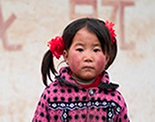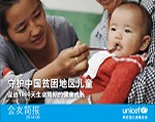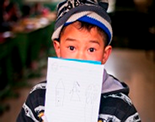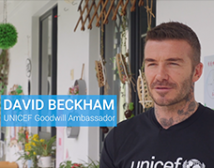NEW YORK, 5 February 2019 – UNICEF warned today of the dangers posed by online violence, cyberbullying and digital harassment for the 70.6per cent of young people aged 15 to 24 years old who are online globally, and called for concerted action to tackle and prevent violence against children and young people online.
|

©UNICEF/UN0259857/Nesbitt
On 21 November 2018, an exhibit titled "Cyber Cocoon Kids: Bridging the information gap in the internet age" in the foyer of UNICEF House. |
The call, made on Safer Internet Day, comes following a recent UNICEF poll of young people, which received more than 1 million responses over five weeks from more than 160 countries, and suggestions from a series of student-led #ENDviolence Youth Talks held around the world. In it, young people provided thoughtful responses about what they and their parents, teachers and policymakers could do to keep them safe -- and kindness stood out as one of the most powerful means to prevent bullying and cyberbullying.
“We've heard from children and young people from around the globe and what they are saying is clear: The Internet has become a kindness desert,” said UNICEF Executive Director Henrietta Fore. “That's why this Safer Internet Day, UNICEF is inviting everyone, young and old, to be kind online, and calling for greater action to make the Internet a safer place for everyone.”
The Internet has become a fixture of young people's lives regardless of income level. According to the International Telecommunications Union (ITU), while 94 per cent of young people aged 15-24 in developed countries are online, more than 65 per cent of young people in developing countries are online. This is well ahead of the pace of Internet usage among the general population. Worldwide, half of the total population, regardless of age, is online.
This online proliferation comes with increased risk. According to data from UNESCO on the prevalence of cyberbullying in high income countries, the proportion of children and adolescents who are affected by cyberbullying ranges from 5 per cent to 21 per cent, with girls appearing to be more likely to experience cyberbullying than boys.
|

©UNICEF/UN0276572/
In honor of the 30th anniversary of the adoption of the Convention on the Rights of the Child, UNICEF is calling for renewed urgency and cooperation to put children's rights at the forefront of digital efforts. |
Cyberbullying can cause profound harm as it can quickly reach a wide audience, and can remain accessible online indefinitely, virtually 'following' its victims online for life. Bullying and cyberbullying feed into each other, forming a continuum of damaging behaviour. Victims of cyberbullying are more likely to use alcohol and drugs and skip school than other students. They also are more likely to receive poor grades and experience low self-esteem and health problems. In extreme situations, cyberbullying has led to suicide. On Safer Internet Day, UNICEF is reminding everyone that kindness – both online and off – is a responsibility that begins with each of us.
In honor of the 30th anniversary of the adoption of the Convention on the Rights of the Child, UNICEF is also calling for renewed urgency and cooperation to put children's rights at the forefront of digital efforts. As part of this, UNICEF is implementing programs to leverage the internet's promise of connectivity and education on behalf of the world's children. For example, UNICEF's Internet of Good Thingsaims to bridge the digital divide and build knowledge in societies by hosting mobile-packaged content designed to make life-saving and life-improving information available for free, even on low-end devices.
“Thirty years after the adoption of the Convention on the Rights of the Child and the creation of the World Wide Web, it is time for governments, families, academia and the private sector to put children and young people at the centre of digital policies," said Fore. “By protecting them from the worst the Internet has to offer and expanding access to its best, we can each help tip the balance for good.”
###
Notes to Editors:
Learn more about online safety here.
Learn more about UNICEF's #ENDviolence global campaign here.
About ITU ICT Facts and Figures
Data about Internet penetration among children and young people come from the ITU ICT Facts and Figures 2017, which features end-2017 estimates for key telecommunication/ICT indicators.
About UNICEF
UNICEF works in some of the world's toughest places, to reach the world's most disadvantaged children. Across 190 countries and territories, we work for every child, everywhere, to build a better world for everyone.
For more information, please contact:
Kurtis Cooper, UNICEF New York, Tel: +1 917 476 1435, kacooper@unicef.org































